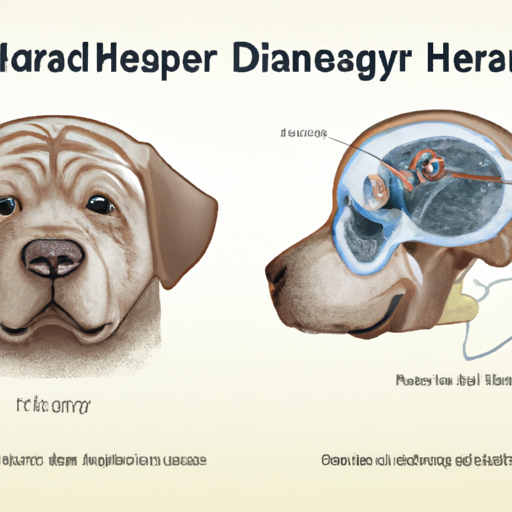As a caregiver, you are more than just a pet owner. You’re a lifeline, a source of comfort, and a beacon of hope for your furry friend. In this piece, we dive into the world of canine health, focusing on a condition that can affect our four-legged friends: hydrocephalus.
1. Understanding Hydrocephalus
Hydrocephalus, often referred to as ‘water on the brain’, is a condition where there is an excessive accumulation of cerebrospinal fluid (CSF) in the brain. This fluid usually serves to cushion the brain and spinal cord, but when there’s too much, it can cause harmful pressure on the brain.
The condition can be:
– Congenital – present at birth and usually caused by a genetic abnormality
– Acquired – develops as a result of head trauma, brain hemorrhage, or infection
Here’s a simple table to illustrate the differences:
| Type | Causes |
|---|---|
| Congenital | Genetic abnormalities |
| Acquired | Head trauma, Brain hemorrhage, Infection |
2. Recognizing the Symptoms
Recognizing the symptoms of hydrocephalus is crucial in ensuring your dog gets the necessary treatment as quickly as possible. The symptoms can be subtle or pronounced, depending on the severity of the condition.
Your dog may experience:
1. Enlarged head
2. Changes in behavior
3. Seizures
4. Vision problems
5. Difficulty walking
3. How is Hydrocephalus Diagnosed?
Your vet will typically start with a comprehensive physical examination and then may recommend imaging studies like MRI or CT scans to confirm the diagnosis. These advanced imaging techniques can help your vet visualize the fluid accumulation in your dog’s brain.
4. Treatment Options
The treatment for hydrocephalus depends on its cause and severity. It may include:
- Medications: Certain drugs can help reduce the production of CSF and manage symptoms.
- Surgery: In severe cases, a shunt may be surgically implanted to divert the excess fluid to another part of the body where it can be absorbed.
Remember, every dog is unique and the optimal treatment strategy should be discussed with your vet.
5. Living with a Dog with Hydrocephalus
While hydrocephalus can be a challenging condition to manage, many dogs with this condition can lead happy and fulfilling lives with the right care and treatment. Regular follow-ups with your vet are crucial, along with monitoring your dog’s symptoms closely at home.
Frequently Asked Questions
Q: Is hydrocephalus in dogs life-threatening?
A: It can be if left untreated. However, with prompt diagnosis and appropriate treatment, many dogs can live a quality life.
Q: Can hydrocephalus in dogs be cured?
A: There’s no outright cure for hydrocephalus, but the condition can be managed with medication and/or surgery.
Q: Is hydrocephalus in dogs painful?
A: The condition itself doesn’t cause pain, but the pressure on the brain can lead to discomfort and changes in behavior.
In conclusion, remember that as a caregiver, your role is pivotal in your dog’s journey with hydrocephalus. Stay informed, stay vigilant, and most importantly, stay hopeful.



